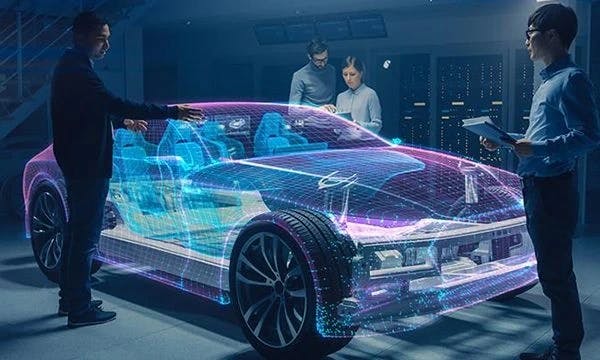With global emissions on the rise—and the 2022 Global Carbon Budget report stating that global CO2 emissions from fossil fuels and cement have hit a new record high of 36.6 billion tons, increasing by 1% in 2022 alone—organizations are transitioning towards cleaner resources, energy and technologies.
Sustainability, clean energy technology or cleantech, a term used to describe the environmentally friendly or green technology industry, is now a business-critical priority.
The cleantech sector comprises companies that develop and commercialize products and services to improve environmental performance, including reducing greenhouse gas emissions. It has been growing rapidly in recent years as investors have become more interested in sustainable investments and green technologies.
While investment in clean energy grew by only 2% annually in the first five years after the Paris Agreement was signed in 2015, renewables, grids and storage now account for more than 80% of total power sector investment. Spending on solar photovoltaic (PV), batteries and electric vehicles is now growing at rates consistent with reaching global net zero emissions by 2050.
“We cannot afford to ignore either today’s global energy and climate crisis, but the good news is that we do not need to choose between them—we can tackle both at the same time,” said IEA Executive Director Fatih Birol. “A massive surge in investment to accelerate clean energy transitions is the only lasting solution.
“While these investments are rising, we need a much faster increase to ease the pressure on consumers from high fossil fuel prices, making our energy systems more secure, and getting the world on track to reach our climate goals,” Birol added.
Emphasizing on increasing clean energy investments for sustainable recovery, the International Energy Agency (IEA) in a report last year released some interesting estimates and also mentioned that the size of the global market for cleantech will surpass the value of the oil market by 2030, rising from $122 billion to $870 billion.
The clean energy technologies market in the US is estimated at $92 billion, while China is forecast to reach a projected market size of $80 billion by 2027. Among the other noteworthy geographic markets are Japan and Canada, each forecast to grow at 5.2% and 4.4%, respectively, in this period. Europe and Germany are forecast to grow at approximately 4.5% CAGR.
With the US government committing a federal investment of $1.7 trillion in climate resilience and clean energy in the coming years, this aims to leverage additional investment from state and local governments and the private sector to total more than $5 trillion.
Increasing investment in critical infrastructure is likely to be a driving factor for the global market as the European Union plans to invest recovery funds in a range of resilient infrastructure projects and clean energy resources.
As the US is set to benefit from the Biden administration’s support under the US Inflation Reduction Act (IRA), head of the European Commission Ursula von der Leyen said on Friday that the EU needs financing tools to help its cleantech compete against US rivals.
At a news conference in Kiruna, she stopped short of calling for new joint EU debt issuance, noting that 37% of the EU’s existing €800 billion recovery fund was earmarked for climate change-related investment.
Although the US’ commitment to the green industry is broadly welcome by the European countries, they fear the IRA will unfairly disadvantage their companies as many of the subsidies only go to products, such as electric cars, that are built in North America.
Von der Leyen said the bloc needed “credible and ambitious” financing tools to preserve the single market. “Such funding should be available in the short term and in the mid-term to allow for an adequate European answer,” she said.
She said the commission was working on an assessment of what the EU cleantech sector needed to compete with US rivals, adding it is also planning to loosen state aid rules.
“It is for us very important to be fast…because the investment decisions are being taken now. We want to keep the industry here and we want to support the industry here because we need it both for the green transition as well as for our prosperity,” she said.
While France, Italy and others have called for new joint EU borrowing to deal with the economic fallout of the Ukraine war and the energy price crisis, German Chancellor Olaf Scholz has pointed out that much of the EU’s jointly borrowed recovery fund has not yet been spent and some €200 billion not even claimed. He said this money should be spent before considering any new joint borrowing.
‘Huge investment in renewables required’
Chief of Norwegian energy giant Equinor, Anders Opedal told the BBC, that huge investment in renewables was needed, including for example using more hydrogen.
“This will require a lot of investment and these investments need to be paid for, so I would assume that the energy bills may slightly be higher than in the past but not as volatile and high as we have today,” Opedal said, adding he does not expect gas and electricity bills to return to the levels they were before the COVID-19 pandemic.
The transition from fossil fuels toward less-damaging sources of energy means costs would remain high. Opedal also said that windfall taxes on energy firms were affecting investment in projects in the UK.
Recent bilateral green economy pact
With the aim to establish standards that drive trade and environmental sustainability, Australia has signed a green economy pact with Singapore in October of 2022.
“It will support the transition of our countries to net zero emissions as well as create jobs and growth opportunities in green sectors to promote the development and commercialization of green technologies,” said Singapore Prime Minister Lee Hsien Loong, adding the agreement would start with initiatives such as developing a list of environmental goods and services that could be given preferential trade treatment.
The global trade pact includes cross-border clean energy trade, climate investments, financing, technology and digital trade platforms. The $18.8 billion Sun Cable project aims to export solar power from Northern Australia to Singapore via Indonesia.
How has HCLTech delivered in this green mission?
HCLTech shares the responsibility of supporting its customer journeys to a greener cloud by choosing the right ecosystems, providing the right skills, leveraging sustainable technologies and driving cloud transformation initiatives in traditional organizations. Here are some of the major examples:
- HCLTech has helped 70% of its customers in the EU and the UK to move to a cloud or a data center powered by renewable energy sources.
- HCLTech has collaborated with enterprises such as Proximus to help reduce their energy consumption and carbon footprint under the umbrella of Smart Energy.
- HCLTech entered into a strategic partnership with Green Datacenter, one of the leading providers of data center services in Switzerland, to help organizations adopt cloud technologies and improve client outcomes.
- HCLTech, with its robust partner ecosystem, enables clients to adopt energy-efficient hybrid or multi-cloud solutions that can help build a resilient, sustainable and future-ready enterprise. In addition to being a member of the United Nations Global Compact,
- HCLTech has also publicly endorsed the Task Force on Climate-related Financial Disclosures (TCFD), signed The Climate Pledge and gained validation from the Science-Based Targets Initiative (SBTi) as part of its ongoing efforts to lessen the company's impact on the environment. By supporting TCFD, HCLTech joined more than 3,000 firms dedicated to enhancing financial system resilience and reducing climate risk through better disclosures worldwide.
HCLTech’s concurrent engineering
The traditional way of Design–Build–Test-Improve is no longer relevant in a fast-moving business environment and collaborative world. Concurrent engineering is the only way for success in product development, which means all departments of product development need to work in parallel and make the decisions related to product performance, cost and manufacturing.
“Design, develop and proving the design is a critical phase, which needs to be managed in a concurrent development environment. With a significant experience in product design and development, HCLTech has a digital twin framework for product design and packaging with which we can virtually simulate all the extremities for product performance and packaging by running a number of Design of Experiments (DOEs) until optimal solutions are achieved.
“Our domain competency and digital twin approach is helping our customers to reduce the development cycle, bring down the need for building a number of prototypes, increased FTR, eliminate the need for soft tooling and thereby supporting the sustainability initiative,” says Prasanna Oruganti, Associate Vice President, Industrial Manufacturing, ERS-HCLTech.
HCLTech has outlined its strategies, actions, achievement and aim in its Sustainability Report 2022. It is working to meet the net zero goals by adopting sustainable technologies and engineering practices, including focusing on renewable energy, investing in the cleantech economy, sourcing energy-efficient hardware and software for data centers, creating smart warehouses that are key aspects of sustainable supply chains, green cloud, incorporating energy-efficient power supply and strategically deploying AI and IoT solutions to reduce wastage and carbon emissions.





